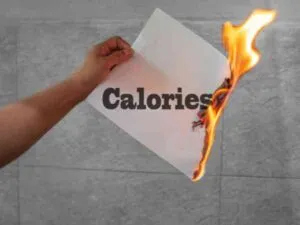Understanding the causes, symptoms, and treatments of the poliovirus

Poliovirus is a viral infection that has had a significant impact on human health throughout history. It is important to understand its causes, symptoms, and treatments to prevent its spread and manage its effects.
Poliovirus primarily affects the nervous system, specifically the spinal cord and brain. It is highly contagious and spreads from person to person through contact with infected feces or respiratory droplets. In areas with poor sanitation and hygiene practices, the virus can easily spread, leading to outbreaks.
Historically, poliovirus caused widespread epidemics, especially during the 20th century. These epidemics resulted in severe illness, paralysis, and even death, primarily affecting children. The development of the polio vaccine in the 1950s and 1960s marked a significant milestone in combating the disease, leading to a dramatic decline in polio cases worldwide.
Understanding the causes of poliovirus is crucial in preventing its transmission. Vaccination plays a vital role in protecting individuals and communities from the virus. There are two commonly used vaccines for polio: the oral polio vaccine (OPV) and the inactivated polio vaccine (IPV). These vaccines stimulate the immune system to produce antibodies that defend against the virus.
What is Poliovirus?

Poliovirus is a deadly infectious virus that belongs to the household Picornaviridae and the genus Enterovirus. It is the causative agent of poliomyelitis, regularly acknowledged as polio. Poliovirus notably influences the frightened system, in particular the spinal cord and brain.
As a viral infection, poliovirus enters the physique thru the mouth, generally from contaminated food, water, or surfaces. It replicates in the intestines and can be shed in the feces of contaminated individuals, permitting it to unfold without problems from character to person.
Poliovirus is categorized into three wonderful serotypes: P1, P2, and P3. Each serotype can reason the ailment and has barely distinctive genetic characteristics.
Due to its capacity to unfold rapidly, in particular, in areas with insufficient sanitation and hygiene practices, poliovirus has triggered main epidemics in the past. However, the improvement of fine vaccines has drastically decreased the incidence of polio worldwide. Vaccination performs a quintessential position in stopping the unfolding of poliovirus and accomplishing its eradication.
Causes of Poliovirus

Poliovirus happens by these three special serotypes: P1, P2, and P3. These serotypes refer to the genetic versions of the virus. The essential reason for poliovirus is the transmission of the virus from character to person. It spreads primarily via contact with contaminated feces or respiratory droplets.
This can occur when contaminated hands, food, or water are ingested. In areas with bad sanitation and hygiene practices, the virus can spread without problems. People who are contaminated with poliovirus can unknowingly ignore it to others, contributing to the transmission of the disease. Vaccination is fundamental in stopping the unfolding of the virus and defending folks from infection.
Symptoms of Poliovirus

Individuals contaminated with Poliovirus can journey a variety of symptoms. Initially, they may also have flu-like signs such as fever, headache, sore throat, and fatigue. In some cases, these signs and symptoms may additionally be moderate or even go unnoticed. However, for a small share of people, the virus can invade the worried system, leading to extra extreme symptoms.
This can consist of muscle weakness, stiffness, and pain. In extreme cases, paralysis can occur, affecting one or extra limbs or even the whole body. Some humans may additionally journey problems with respiration and swallowing. Long-term issues of poliovirus contamination can encompass muscle atrophy, deformities, and mobility impairments. Post-polio syndrome, a circumstance that can happen years after the preliminary infection, may additionally motivate muscle weakness, fatigue, and joint pain.
Rehabilitation and guidance are vital for managing these long-term effects.
Diagnosing Poliovirus

Diagnostic strategies for detecting Poliovirus contain a range of laboratory tests. One frequent approach is the series of stool samples, the place the virus can be present. These samples are then analyzed in the laboratory the usage of methods like polymerase chain response (PCR) to observe the presence of the viral genetic material.
Additionally, serological checks can be carried out to become aware of antibodies produced in response to the virus. Blood samples are taken, and the presence of unique antibodies toward the virus is determined. These diagnostic exams assist humans contaminated with Poliovirus and make contributions to surveillance efforts for monitoring the unfolding of the disease.
Treatment Options

While there is no precise therapy for Poliovirus, numerous remedies and interventions can assist control the signs and problems related to the disease. Supportive care is necessary and focuses on relieving pain, lowering fever, and keeping hydration and nutrition. Physical remedy performs an indispensable position in enhancing muscle strength, mobility, and flexibility for persons with paralysis or muscle weakness.
Assistive units like braces, crutches, or wheelchairs can resource mobility and independence. The respiratory guide might also be quintessential for those with respiration difficulties. The standard aim of therapy is to reduce the effect of Poliovirus and beautify the individual’s well-being and day-by-day functioning.
Vaccination and Prevention

Vaccination performs a critical function in stopping the unfolding of Poliovirus and eradicating the disease. It is the most high-quality way to shield men and women and communities from polio. Two kinds of vaccines are regularly used: the oral polio vaccine (OPV) and the inactivated polio vaccine (IPV).
OPV is administered orally and consists of weakened poliovirus. It presents top-notch intestinal immunity and helps stop the unfolding of the virus. IPV is an injectable vaccine that carries inactivated poliovirus, making it secure for humans with compromised immune systems. Both vaccines stimulate the immune device to produce antibodies, safeguarding against polio contamination and contributing to international efforts to put off the disease.
What is the State of the Polio Virus in India?

As of the modern state, India has made enormous development in the battle in opposition to polio however continues to face challenges in totally eradicating the virus. In 2014, the USA was once declared polio-free, marking a magnificent achievement. However, occasional instances of vaccine-derived poliovirus (VDPV) nevertheless emerge.
The Government of India, alongside more than a few businesses and healthcare professionals, continues to work diligently to keep excessive vaccination insurance and surveillance.
The surveillance machine is critical in detecting and responding to any instances of polio. Stool samples are amassed from persons with acute flaccid paralysis (AFP), a key symptom of polio, to check for the presence of the poliovirus. Rapid response groups look into and put into effect containment measures in case of any high-quality samples.
Collaboration with global corporations such as the World Health Organization (WHO) and UNICEF performs a quintessential function in presenting technical support, resources, and education to India’s polio eradication efforts.
Despite the challenges, India stays dedicated to disposing of polio entirely. Continued vaccination efforts, surveillance, and public consciousness campaigns are fundamental to making sure that the polio virus stays underneath, managed and ultimately eradicated from the country.
Global Eradication Efforts

Global efforts to eradicate Poliovirus contain large vaccination campaigns and surveillance programs. Vaccination campaigns aim to reach each and every toddler and furnish them with OPV or IPV. These campaigns regularly goal high-risk areas and prone populations. Alongside vaccination, surveillance applications carefully screen polio instances and habits every day checking out of stool samples to observe the presence of the virus. Rapid response groups look at any suspected instances and enforce containment measures.
Living with Poliovirus
- Seek clinical support: Regular check-ups with healthcare authorities who specialize in post-polio care can furnish precious education and assist reveal any adjustments in your condition.
- Physical remedy and exercise: Engage in tailored bodily remedy workout routines to preserve muscle electricity and mobility. Low-impact things to do like swimming or mild stretching can additionally be beneficial. Consult a bodily therapist for a personalized workout plan.
- Assistive devices: Make use of assistive units such as wheelchairs, crutches, or braces to decorate mobility and independence.
- Energy conservation: Manage fatigue by means of pacing yourself and planning things to do in a way that approves relaxation breaks. Prioritize duties and delegate when possible.
- Accessibility modifications: Adapt your dwelling surroundings to accommodate your needs. Install ramps, seize bars, and different accessibility aspects to beautify security and ease of movement.
- Support networks: Connect with guide agencies and businesses that specialize in post-polio care. These networks can supply treasured resources, emotional support, and possibilities for records exchange.
- Mental well-being: Take care of your emotional fitness by way of in search of counseling or remedy if needed. Engage in things to do that carry pleasure and fulfillment.
- Balanced diet: Maintain a nutritious food plan to aid normal fitness and muscle strength. Consult a healthcare expert or nutritionist for customized dietary recommendations.
Conclusion
We have discovered the causes, symptoms, and handy redress for Poliovirus, as nicely as the importance of vaccination in stopping its spread.
It is vital to increase attention to Poliovirus and its doable impacts, as this information empowers people and communities to take proactive measures in prevention. Vaccination campaigns, surveillance programs, and applicable hygiene practices play a quintessential function in controlling the unfolding of the virus.





